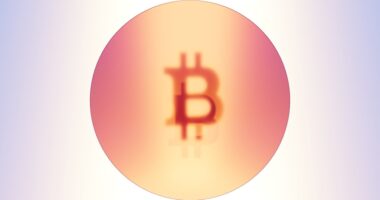The art world has been revolutionized by the rise of Non-Fungible Tokens (NFTs) in recent years. NFTs are unique digital assets that represent ownership or proof of authenticity of a specific item or piece of content, such as artwork, videos, music, and more, using blockchain technology. This innovation has opened up new opportunities for artists to monetize their digital creations and has created a new market for art collectors and enthusiasts. The NFT market has seen exponential growth, with sales reaching billions of dollars in 2021 alone. This surge in popularity has attracted attention from artists, collectors, and investors worldwide, leading to a significant shift in the art industry.
The rise of NFTs has also sparked a debate about the value and ownership of digital art. Traditionally, physical artwork has been the primary focus of the art market, but NFTs have challenged this notion by introducing a new form of digital ownership. This shift has led to a reevaluation of what constitutes valuable art and has prompted artists to explore new mediums and formats for their work. As a result, the art world is experiencing a digital renaissance, with artists embracing technology to create and sell their art in ways that were previously unimaginable. The rise of NFTs has not only transformed the art world but has also paved the way for a new era of creativity and innovation.
Understanding the Concept of Uniqueness and Scarcity in NFTs
One of the key concepts that underpin the value of NFTs is the idea of uniqueness and scarcity. Unlike traditional digital files that can be easily replicated and distributed, NFTs are one-of-a-kind assets that cannot be duplicated. This uniqueness is achieved through blockchain technology, which ensures that each NFT is verifiably authentic and cannot be replicated or forged. As a result, NFTs have inherent scarcity, as there is only one official version of each digital asset, making them highly sought after by collectors and enthusiasts.
The concept of uniqueness and scarcity has transformed the way we perceive and value digital art. In the past, digital artwork was often undervalued due to its reproducibility and lack of scarcity. However, NFTs have changed this narrative by introducing a new model for digital ownership and provenance. Artists can now create limited edition NFTs or even one-of-a-kind pieces, adding a new layer of exclusivity to their work. This shift has elevated the value of digital art and has provided artists with a new avenue for monetizing their creations. As a result, the concept of uniqueness and scarcity has become a driving force behind the success of NFTs in the art world, reshaping the way we perceive and collect digital art.
The Role of NFT Artists in Creating Valuable NFTs
NFT artists play a crucial role in creating valuable NFTs that resonate with collectors and enthusiasts. These artists are at the forefront of the digital art movement, leveraging their creativity and technical skills to produce unique and compelling artwork that stands out in the crowded NFT market. By pushing the boundaries of digital art and exploring new mediums and formats, NFT artists are driving innovation and shaping the future of the art world.
In addition to creating visually stunning artwork, NFT artists also play a key role in establishing their own brand and identity within the NFT space. Building a strong personal brand can significantly impact the value and desirability of an artist’s NFTs, as collectors are often drawn to artists with a distinct style and vision. By cultivating a loyal fan base and engaging with their audience, NFT artists can create a sense of community around their work, driving demand for their NFTs and establishing themselves as influential figures in the industry.
Furthermore, NFT artists have the opportunity to experiment with interactive and immersive experiences that go beyond traditional static artwork. By incorporating elements such as animation, sound, and interactivity into their NFTs, artists can create truly unique and engaging pieces that captivate audiences and command higher values in the market. As such, NFT artists are not only creators but also innovators who are shaping the future of digital art and redefining the concept of value in the art world.
NFT Jobs: Exploring Opportunities in the NFT Market
“`html
| Job Title | Skills Required | Salary Range |
|---|---|---|
| NFT Artist | Digital art skills, NFT platforms knowledge | 30,000 – 100,000 |
| NFT Developer | Blockchain development, smart contracts | 60,000 – 150,000 |
| NFT Marketer | Digital marketing, NFT market understanding | 40,000 – 120,000 |
| NFT Consultant | Blockchain expertise, NFT market analysis | 50,000 – 130,000 |
“`
The rise of NFTs has created a wealth of opportunities for individuals looking to enter the burgeoning NFT market. From artists and collectors to developers and marketers, there is a diverse range of roles available within the NFT space. Artists have the opportunity to monetize their digital creations through NFT sales, while collectors can invest in rare and valuable NFTs as part of their portfolio. Additionally, developers and technologists play a crucial role in building the infrastructure and platforms that support the creation and trading of NFTs.
Moreover, there is a growing demand for marketers and community managers who can help promote and elevate the visibility of NFT projects and artists. These roles involve creating engaging content, managing social media presence, and fostering a strong community around NFT projects. Furthermore, legal and financial professionals are also essential in navigating the complex regulatory landscape surrounding NFTs, ensuring compliance with laws and regulations related to digital assets.
As the NFT market continues to evolve, new job opportunities are likely to emerge, presenting exciting prospects for individuals with diverse skill sets and expertise. Whether it’s creating art, developing technology, marketing, or legal counsel, there are numerous avenues for professionals to contribute to the growth and success of the NFT market.
Recent NFT News: Trends and Developments in the NFT Space
The NFT space has been abuzz with recent news and developments that have shaped the trajectory of the market. From high-profile NFT sales to collaborations between artists and brands, there have been several notable trends that have captured the attention of industry insiders and enthusiasts alike. One significant trend is the growing interest from traditional art institutions and galleries in embracing NFTs as a new medium for showcasing and selling artwork. This shift has led to groundbreaking partnerships between established art institutions and NFT artists, further legitimizing the role of NFTs in the art world.
Another noteworthy development is the rise of environmental concerns surrounding the energy consumption associated with blockchain technology used in minting and trading NFTs. This has prompted discussions within the industry about implementing more sustainable practices to mitigate the environmental impact of NFTs. Additionally, there has been an increasing focus on inclusivity and diversity within the NFT space, with initiatives aimed at supporting underrepresented artists and creators.
Furthermore, collaborations between musicians, filmmakers, and visual artists have resulted in innovative cross-disciplinary projects that push the boundaries of what is possible with NFTs. These collaborations have expanded the scope of NFTs beyond visual art, opening up new possibilities for creative expression across different mediums.
Factors Influencing the Value of NFTs

Several factors influence the value of NFTs in the market, ranging from artistic merit to scarcity and demand. The reputation and track record of an artist can significantly impact the value of their NFTs, as collectors are often drawn to established names with a proven history of creating valuable artwork. Additionally, the uniqueness and scarcity of an NFT play a crucial role in determining its value, with one-of-a-kind pieces often commanding higher prices due to their rarity.
Moreover, the demand for specific types of artwork or themes can drive up the value of related NFTs, as collectors seek out pieces that resonate with their interests or align with current trends. The cultural significance of an artwork can also influence its value, as pieces that capture a moment in time or reflect important social issues may hold greater appeal to collectors.
Furthermore, the platform on which an NFT is sold can impact its value, as certain marketplaces may have a larger audience or higher prestige, leading to increased visibility for listed artworks. Additionally, collaborations between artists or partnerships with brands can elevate the value of an NFT by leveraging existing fan bases or tapping into new audiences.
The Future of NFTs: Potential Impact on the Art Market
The future of NFTs holds immense potential to reshape the traditional art market by democratizing access to art ownership and creating new opportunities for artists to monetize their work. As blockchain technology continues to evolve, we can expect to see advancements in areas such as provenance tracking, royalties distribution, and interoperability between different platforms, further enhancing the value proposition of NFTs.
Moreover, as more artists embrace digital mediums and experiment with new forms of expression through technology, we are likely to witness a continued blurring of boundaries between physical and digital art. This convergence may lead to innovative hybrid experiences that combine elements of both worlds, offering audiences unique ways to engage with art.
Furthermore, as regulatory frameworks around digital assets become more defined, we can anticipate increased institutional participation in the NFT market, leading to greater integration with traditional finance and investment channels. This could potentially open up new avenues for liquidity and investment opportunities within the art market.
In conclusion, the rise of NFTs has ushered in a new era for art by challenging traditional notions of ownership and value while creating exciting prospects for artists, collectors, and industry professionals alike. As we look ahead to the future of NFTs, it’s clear that this innovative technology will continue to shape the art world in profound ways, offering boundless potential for creativity, collaboration, and growth.
If you’re interested in learning more about the potential value of NFTs, you should check out this article on NFT-Jobs. It provides valuable insights into the factors that contribute to the value of NFTs and how they are revolutionizing the digital art market. This article offers a comprehensive overview of the NFT landscape and is a must-read for anyone looking to understand the potential of this emerging technology.
FAQs
What is an NFT?
An NFT, or non-fungible token, is a digital asset that represents ownership or proof of authenticity of a unique item or piece of content, such as artwork, music, videos, or collectibles, using blockchain technology.
What makes an NFT valuable?
Several factors contribute to the value of an NFT, including the scarcity of the digital asset, the reputation and popularity of the creator, the uniqueness and originality of the content, the demand from collectors and investors, and the provenance and history of the NFT.
How does scarcity affect the value of an NFT?
Scarcity plays a significant role in determining the value of an NFT. The rarer and more limited the edition of the digital asset, the higher its perceived value, as scarcity increases the desirability and exclusivity of the NFT among collectors and investors.
What role does the creator’s reputation and popularity play in the value of an NFT?
The reputation and popularity of the creator of an NFT can significantly impact its value. Established artists, musicians, and celebrities often command higher prices for their NFTs due to their existing fan base, influence, and market demand for their work.
How does the uniqueness and originality of the content affect the value of an NFT?
The uniqueness and originality of the content represented by an NFT can contribute to its value. One-of-a-kind or limited edition digital artworks, rare collectibles, and exclusive content are often more valuable due to their scarcity and the novelty of the creative expression.
What is the role of demand from collectors and investors in determining the value of an NFT?
The demand from collectors and investors can drive the value of an NFT, as it reflects the market’s interest and willingness to pay for a particular digital asset. High demand for an NFT can lead to competitive bidding and higher prices, while low demand may result in lower valuations.
How does the provenance and history of an NFT impact its value?
The provenance and history of an NFT, including its origin, previous ownership, and any notable transactions or associations, can influence its value. A well-documented and prestigious provenance can enhance the perceived value and authenticity of an NFT in the eyes of potential buyers.





